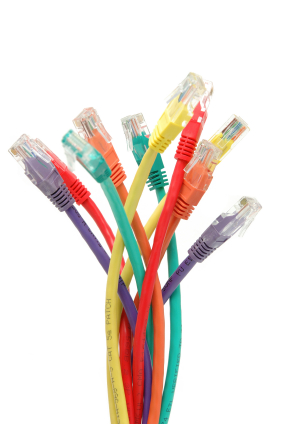The Ideal Network Cables For A Home Network

If you are not good with network cables, then you should probably need help when it comes to choosing the right networking cable for your home network. The most commonly used network cables for a home network are cat 5 and cat 6 network cables.
Cat5 network cabling is an older cable type designed to support speeds of 10 Mbps and 100 Mbps. However, there is a possibility to get gigabit speeds on a cat5 networking cable only if the cable is shorter. As we said, cat5 network cables are older type of network cabling which is why it may be difficult to find these network cables in regular electronics stores. The best way to buy cat5 network cables is online. There are many reputable online retailers which offer high quality products.
Cat5e or category 5 enhanced network cabling represents an improved version of the Cat5 networking cable category. It is designed to support 1000 Mbps gigabit speed and offers faster data transfer than the cat5 cabling. Cat5e cabling cuts down on crosstalk, the interference you can get between wires inside cables. Both improvements can give you a faster and more reliable speed.
Cat6 networking cable is faster cable which features more improvements. It has stricter specifications and is capable of 10 gigabit speeds. Usually these speeds are not used at home, so it won’t make a huge difference in the everyday home network use. However, if you do not have a network cable and you need one, it is always best to buy the newer generation cat6 network cabling.
When compared, the main difference between cat5 and cat6 network cabling is their speed. So if you are satisfied with the current speed of your network, there is no need to upgrade. But if you already have a gigabit-capable hardware, you need to upgrade it with newer generation network cables because of the speed.
If you want to get the best of your network, change your old cat5 with cat6 network cable. And, like we said, some cat5 network cables can reach gigabit speed, but this can be proven only by running several tests, which can be exhausting. Consequently, if you transfer a lot of data over your network, changing your network cable form the old cat5 to the new cat6 will surely help, which additionally is a cheap investment. However, if you need it only for home use, a replacement is not necessary.



